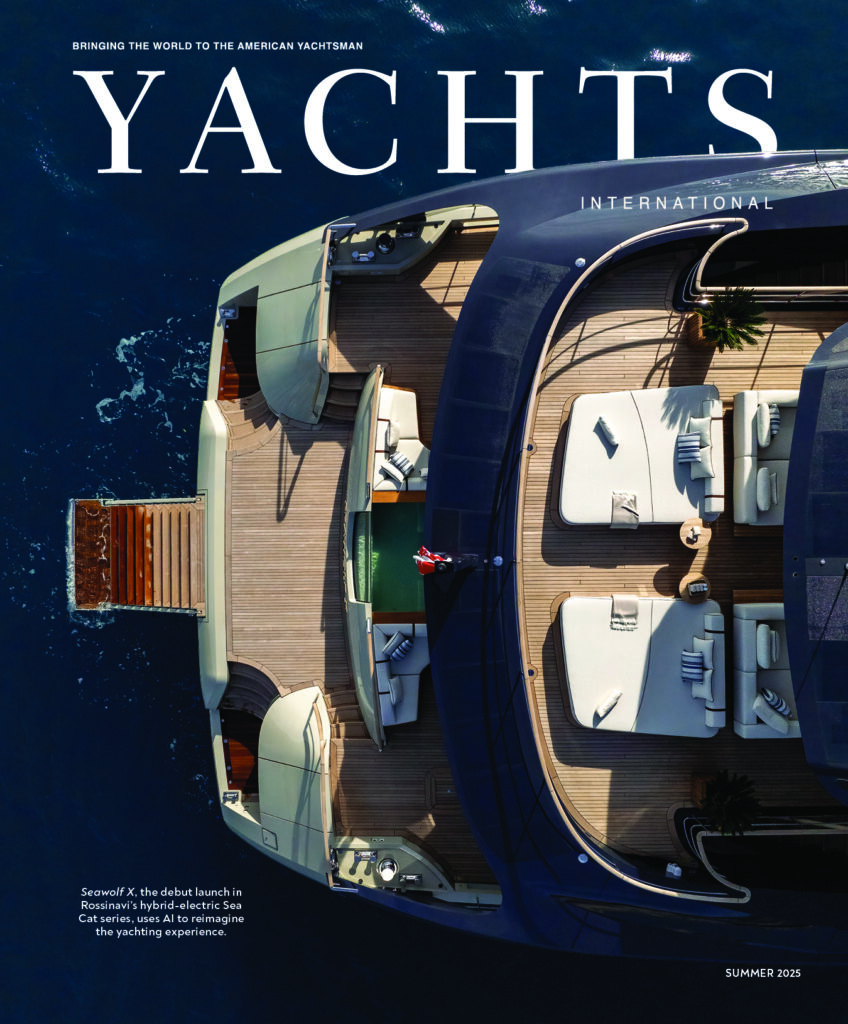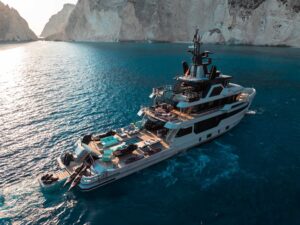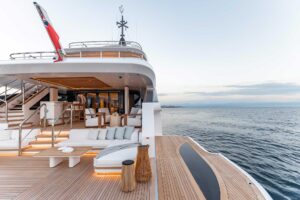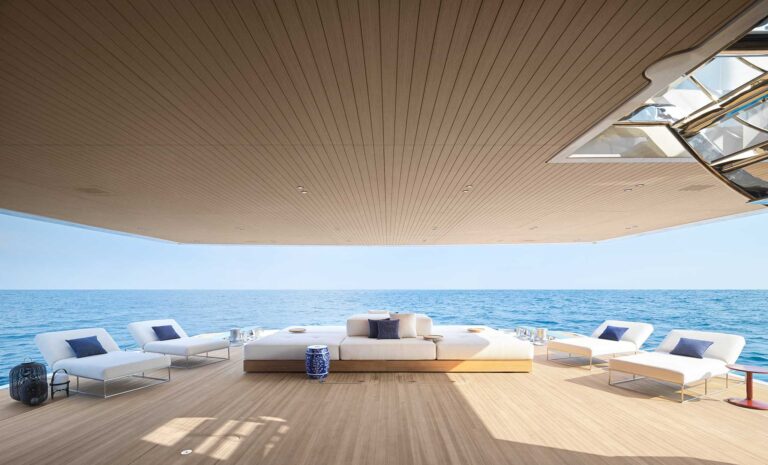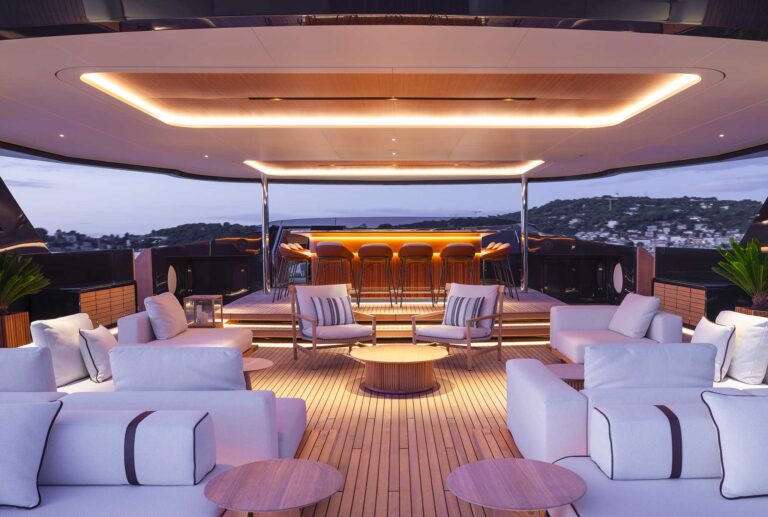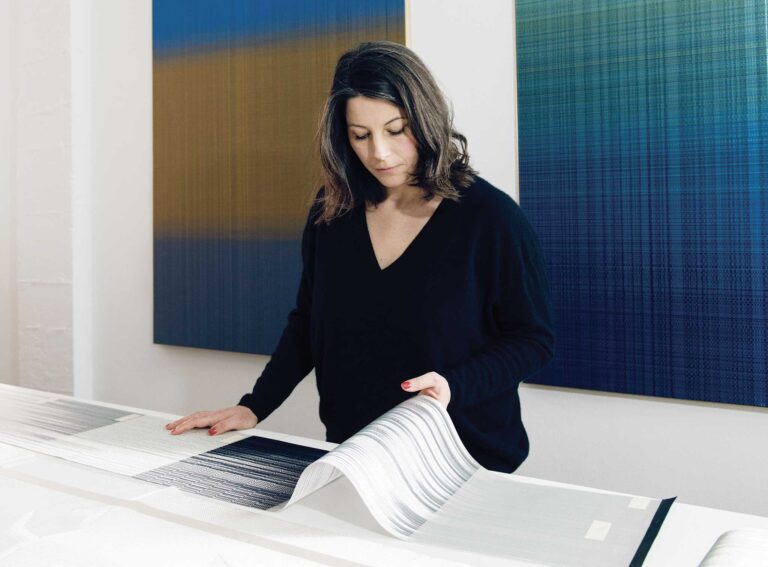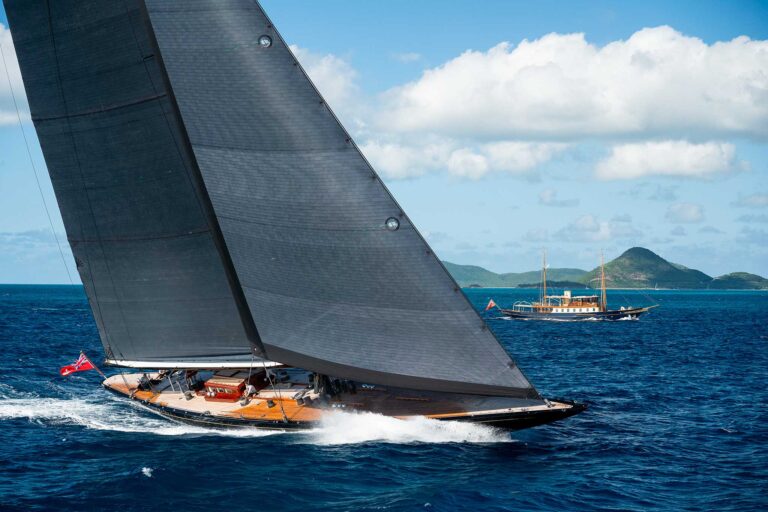With her hull design based on the intrepid Bering Sea crabber genre, a luxurious new steel and aluminum expedition yacht makes its Pacific Northwest debut. Polar Bear is an eloquent response to her owner’s adventuresome cruise agenda.

With the possible exception of ferro-cement, one can make a convincing case in favor of any of the materials used by yachtbuilders today. Composite, aluminum, steel—even wood—all offer their own considerable merits, and all ably meet relevant structural mandates as well as a variety of owner needs, preferences and cruising styles. As one of a handful of North American yachtbuilders specializing in steel construction, Citadel Yachts’ Greg Ward presents a compellingly simple argument for his material of choice: “When the US Navy stops building with steel, so will I.”
Ward’s enthusiasm for the medium becomes apparent upon inspection of his third and latest project, the 102-foot expedition yacht Polar Bear, launched last summer and currently engaged in a series of inaugural voyages up and down the Pacific Coast. Polar Bear boasts a steel hull and main-deck superstructure, with a bridge-level deckhouse and flybridge of aluminum. At dockside, the observer’s eye is first drawn to the gleaming ice-blue hull, and its admirably fair contours that reveal not a hint of weld line, dimple or ragged edge. A closer look shows a similar degree of craftsmanship throughout the vessel. It is apparent in the cabinetry and interior finishes, and deeper yet, in the installation of hardware and systems fundamental to the safety and comfort of owners, crew and guests. For that salutary outcome Ward gives credit to his vice president of operations, Richard Liepelt, to the teams of welders, shipwrights, carpenters and others at work in his Tacoma, Wash. yard and to the processes they employ in shaping the all-important underlying skeleton. “Structural components, including keel, transverse frames and longitudinal members, are computer-cut to our design files and delivered to us treated with weldable primer so there’s no chance of corrosion compromising the welds,” Ward says. “We spend a lot of time positioning each piece prior to welding, maintaining tight tolerances so that the hull in its final form meets the spec exactly.” And whereas more conventional methods often regard longitudinal stringers as structurally secondary to the keel and transverse frames, Ward adds that the Citadel yard’s process places equal importance on both, citing the advantages of overall strength and stiffness in the finished product, and the ability to skip-weld longitudinals to hull plates at closer intervals, typically about one foot versus 40 inches for transverse frames. “When the frames are absolutely true, hull plating will naturally flow,” Ward says. Plates, moreover, are ordered by the yard in unusually long dimensions—up to 40 feet for aft and midship sections—in part to reduce the number of end-to-end welds and attendant fairing requirements, but also the better to conform to hull curvatures.
That degree of probity is entirely consistent with Polar Bear’s globe-girdling mission. Her hullform is based on proven commercial designs, and features seakindly geometry corresponding to the demands of year-round operation in the often cantankerous North Pacific Ocean and treacherous Bering Sea. Notwithstanding his roots in landlocked North Dakota, the yacht’s owner, Larry Jodsaas, can claim a longstanding relationship with the sea, beginning with his service aboard US Navy submarines and later enjoying extensive cruises aboard a succession of privately owned boats, most recently a 92-footer. Together, these experiences shaped in him a deep respect for the power of the marine environment, a profound sense of adventure and a clear idea of what his next yacht should be. Attracted to the Citadel series’ overall design and steel hull construction, Jodsaas came to the yard with a detailed brief. Foremost among his considerations was his family of three grown children and seven grandchildren, all of whom he envisioned welcoming on board, together, for anywhere from an afternoon to a month or longer. And, having cruised extensively aboard his previous yacht between California and destinations along Mexico’s Pacific coast, his plans for Polar Bear include not only those same reaches, but also exploring Alaskan waters, the Galápagos Islands, the Pacific and Europe, with plenty of fishing along the way. “I want to be able to go anywhere in the world, and to stay any length of time in any port,” Jodsaas says. “What I don’t want is for the boat to be a limiting factor.”

He’s confident that it won’t be: in addition to its robust construction and offshore-friendly design, Polar Bear’s arrangement and 28-foot (8.5-meter) beam readily meet his needs for accommodating family and friends. The full-beam owner’s suite occupies the forward portion of the main deck, and includes a king-size bed on centerline, copious dresser cabinets and a settee, all arrayed between two large view-framing windows. Well forward is a his-and-hers bath with electrically heated floor, mirror-image vanities, wardrobes and a shared steam shower. Here and throughout the yacht, joinery is satin-finished American cherry with madrone burl accents—wood species selected for their classic appeal, and superbly executed by Citadel’s woodworkers with traditional moldings and curved lintels. Guest accommodations on the lower deck include two king-bed suites, a queen-size bed suite and one with double twins. Guest bathrooms feature countertops of an intriguing stone that the manufacturer calls “black mosaic,” an aggregate of river rock forever embedded by nature’s power in a contrasting lava matrix. Crew quarters forward on this deck comprise two staterooms, laundry and crew mess.
Given the Jodsaas’ family-oriented cruising style, the galley most certainly will prove to be one of the most popular onboard venues. Here, six tall chairs encircle one curved face of a large island—itself a showpiece of dramatically figured stone—well suited for lingering over morning coffee, savoring informal meals or simply watching as the chef holds forth at a Wolf six-burner range amid a surrounding expanse of countertops, high-end appliances and plenty of cabinets; an adjacent pantry provides additional storage for lengthier cruises, and includes a second laundry center.
Another benefit accruing to Polar Bear’s steel construction is the inherent strength of the transverse beams in lower- and main-deck overheads, an attribute that allows them to span the full width without the need for intermediate support. “Apart from watertight bulkheads,” Ward says, “there are no interior load-bearing walls. This has allowed the owner and designers a great deal of latitude in creating large inside spaces, and can give the yacht an exceptionally open feel, especially considering the yacht’s 28-foot beam.” Accordingly, both the galley and main-deck salon offer plenty of usable space and clear traffic patterns; in the salon/dining space are a large U-shaped lounger, game table, full-service bar and eight-place table for formal dining.
One level above, the lower helm and skylounge share a comparably large, open space, brightly illuminated during the day thanks to surrounding expanses of glass. Guests and family can relax here at a large L-shaped settee, at a second bar on the port side or seated on the raised banquette to enjoy the view ahead. The broad helm console is fitted with a sophisticated Furuno navigation suite and four display screens, but also with a classic precision compass and multi-drawer paper-chart storage with an appropriately large counter surface for navigating by this prudent redundancy. The flybridge deck is equally conducive to family enjoyment, and is fitted with a six-person spa tub, a large curved settee, sun pad and refreshment center in addition to the upper helm station.
Polar Bear’s mechanical fit-out also reflects the Jodsaas’ sense of what’s proper at sea, and includes a 700-pound anchor deployed by a Maxwell VW 8000 hydraulic windlass, and, for handling the yacht’s three tenders (including a 24-foot Robalo center-console fishing boat), an impressive 10,000-pound-capacity Hydra-Pro crane. An 8,600-gallon fuel capacity attests to the ambitious cruise agenda planned for the coming years, and the spacious, well-equipped engine room and adjoining lazarette offer admirable ease of access for proper service and maintenance, always critical but especially so on bluewater passages. Indeed, the only incongruity to be found aboard Polar Bear is the hailing port emblazoned across her transom: Grand Forks, North Dakota. But there’s method to the idiosyncrasy, for Grand Forks also is home to the University of North Dakota, where Larry Jodsaas earned his degree in electrical engineering. He credits his alma mater as a cornerstone of his subsequent success in the technology industry, and continues to support its programs through his diverse philanthropic initiatives, ergo, what better acknowledgement of its role in his personal growth and, ultimately, his choice of the adventure cruising lifestyle?
For more information, visit citadelyachts.com

